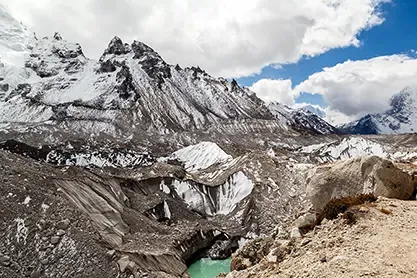Hyundai Motorstudio Senayan Park
Hyundai Motorstudio Senayan Park
Newsroom
-
What We Can Do to Adapt to Climate Change?
- Hyundai Motorstudio Senayan Park Senayan Park 2022.05.04
-
The current condition of global climate change has had a negative impact on the wider community with the emergence of food supplies due to potential crop failures, clean air crises and the widespread spread of tropical diseases, malaria, dengue fever and diarrhea. We are able to adapt to climate change.
The excessive increase in greenhouse gas concentrations and global warming are factors causing climate change.
Climate change in Indonesia and Asia Pacific are marked by the emergence of a prolonged dry season which results in fires and the potential for forest fires. However, when entering the rainy season, the rain falls faster with high rainfall resulting in floods and landslides.
We are now feeling the impact of climate change with floods and landslides everywhere. A much bigger impact from climate change is the melting of ice sheets, especially in the north and south poles, which results in rising sea levels.
This sea level rise has caused the sinking of several coastal areas and small islands, including in Asian Ocean including Indonesia.
In addition, climate change also causes millions of flora and fauna species to be unable to adapt to changing temperature conditions. The community is invited and re-awakened to adjust to adapt to climate change, in order to be able to minimize the impacts that have occurred and anticipate risks while reducing costs.
An effort to reduce the greenhouse effect and slow down the rate of global warming and our community should like to plant trees and use live plants.
It is recommended that the government immediately take national action in dealing with global climate change by carrying out mitigation and adaptation activities. Mitigation activities are carried out in the energy sector, in the land and forest use sector, as well as in the marine and fisheries sector. The benefit of this mitigation is to increase the ability of forest and land resources in coastal areas to absorb carbon thereby reducing the effect of greenhouse gasses.
Mitigation by planting mangroves and coastal vegetation, rehabilitating coral reefs through artificial reef transplantation, in addition to increasing the area of marine conservation to 9.5 million hectares.
Meanwhile, adaptation is carried out in the water resources sector, marine, coastal and fishery sector, agricultural infrastructure sector, health sector, forestry sectorFive things you can do to help reduce global warming
Melting ice and rising sea levels are linked to increased temperatures caused by human activities, according to the United Nations Intergovernmental Panel on Climate Change (IPCC). At the Paris summit, world leaders agreed to push global warming levels below the "critical limit" of 1.5 degrees Celsius.
However, planet Earth could exceed this threshold within 12 years. These are some of the everyday changes you can make right now.1. Using public transportation
Does your city have a sufficient public transport network?Walking or cycling or using public transport - as opposed to driving a car - will reduce carbon emissions, as well as make you healthier.We can choose how we travel within the city and if we don't have access to public transport, make sure that you vote for politicians who promise to build public transport. If you really have to use a car, then use an electric vehicle. Also if possible, use the train instead of the plane when you travel. Go even further by canceling your trip and using video conferencing facilities.2. Save energy
The problem is not just clean energy, but also using less energy. Dry your clothes instead of using the dryer to avoid wasting fossil fuels for electricity consumption. Use insulation on the roof to prevent heat dissipation in winter.
Look for energy efficient electronic devices. Turn off and unplug your electrical equipment when not in use. These changes may seem small, but they are a powerful way to save energy. When you buy electronic devices, make sure they are energy efficient. You can also choose to adopt renewable energy sources for your needs, for example solar water heaters.3. Eat less meat, or even better if you become a vegan
Switch to organic food and consume local produce. The production of red meat consumes more greenhouse gas emissions than the production of chicken meat, fruits, vegetables and cereals. Eat less meat and eat more vegetables and fruits. If this is difficult, start with a meat fast one day a week.It will also be very useful to reduce the consumption of milk because of the high greenhouse gas emissions for its production and transportation. Strive to buy local seasonal foods (while reducing wasted food).4. Reduce and recycle... even for water
Always look for ways to save water. Time and again we are told about the advantages of recycling. However transporting and processing materials for recycling is a carbon-intensive process or leaves a large carbon footprint.
However recycling consumes less energy than producing from scratch. Reduction and recycling can minimize losses. This also applies to water. We have to save and recycle water while trying to catch rainwater.5. Tell and educate others
There is no such thing as too young to understand the environment. Spread knowledge about climate change and educate others. Build a "sharing network" that can help gather resources such as lawn mowers, garden tools and achieve a more eco-friendly standard of living.All of this if practiced every day by billions of people will be able to adapt to climate change and bring about sustainable development without affecting welfare.




